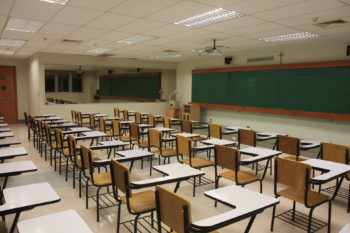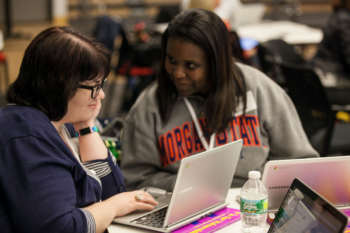How Covid Affected Student Learning – Part 2
How Covid Affected Student Learning – Part 2
The Community and Schools Shut Down
 Businesses were shutting down and asking employees to work from home. My husband was one of the last employees to work at his computer company. It made absolutely no sense to me why he was being required to go to work when the barista, serving coffee in the company lobby, was staying home. Finally, my husband received a phone call from his boss to work from home. I guess that Wednesday was the last normal day I can remember during the Covid pandemic. The next day, my husband worked from home and I worked at the school.
Businesses were shutting down and asking employees to work from home. My husband was one of the last employees to work at his computer company. It made absolutely no sense to me why he was being required to go to work when the barista, serving coffee in the company lobby, was staying home. Finally, my husband received a phone call from his boss to work from home. I guess that Wednesday was the last normal day I can remember during the Covid pandemic. The next day, my husband worked from home and I worked at the school.
Then came Friday, March 13th. The day started out normal. One student complained about another as we entered the classroom after the morning bell rang. All of a sudden, the power flickered. My heart skipped a beat as the power generator kicked on and power was restored. Five minutes later, the school phone system went down, the power went out, and the internet was down. I think my heart stopped beating at that moment. My thoughts were that we are being invaded. What am I going to do? Will I have to evacuate and take my students up to a cul-de-sac at the top of a hill to stay safe? I could not imagine how I could evacuate and keep 24 fearful seven-year-olds calm while hiking up a hill? Most pictures in my head looked like hysteria.
I took a breath, got out my phone, and called my husband for many reasons. We live around the corner. I needed to know how widespread this was. I was in full panic mode. I thought that was pretty clever for the terrorists to shut down the internet. Cutting off communication made this a whole different ball game. Feelings of isolation started to settle in and my own fear was getting the best of me. I needed to hear his voice. My first question was is the power out at home? He said no. A wave of relief spread across my entire body. I think I felt all my muscles relax. Then I asked is the internet out at home. Another no! Thank goodness. Okay, now I can begin to think again. The question now was what the heck is going on? The level of anxiety was hitting like a roller coaster in the classroom. (Many of you who are teachers right now are thinking what in the heck were the students doing while she was on the phone. All this took place during my lunch break.) With the time remaining, I headed up to the front office for a bio break. I arrived in the staff room simultaneously with the principal. She was sitting down and looked as though she was in shock. She delivered the news to those of us on the second lunch period that she has to shut the school down. She couldn’t believe her own words.
How Do I Say Goodbye to My Students?
What I hate most about what happened next was that my gut instinct was right. I was only told to pack the students up because we are closing the school down. The virus was spreading and we could no longer keep students and staff safe. The immediate thoughts around campus were that we would be back in three weeks. Maybe it was my degree in Biological Sciences that guided me that day, or my work in biotech for five years. But my instincts that day led me to pack the students up with their workbooks for the rest of the year. It’s never a good feeling being right about difficult things and this was one of them. I taught the rest of the day as normal as possible. When the final bell rang, I walked the students to their parents and returned to my classroom. Friday, March 13th 2020 marks the last day that my second graders would see a classroom for 18 months.
Flake by flake, traumas continued to fall upon us. Power outages, failed internet connectivity, massive California forest fires, not to mention teaching seven-year-olds how to video conference. We needed time to heal. We needed the snow to melt.
Welcome New School Year
The 2020-2021 school year could be a novel on its own. The distance learning curve was brutal and the expectations were incredibly unrealistic. All that aside, where are we now? I was crushed by my own personal obligation to close the student’s learning gap and the trauma caused by online learning.
This coming school year my expectations have to shift. The students in front of me are not the students I have known during my teaching career. They need social emotional lessons grounded in team building and resiliency. STEM projects, music, art, and literacy intervention will be focus of what these children need to heal the trauma from the last two years of learning.

 Preparing Our Elementary Kids Return to School
Preparing Our Elementary Kids Return to School
 Learning Environment
Learning Environment